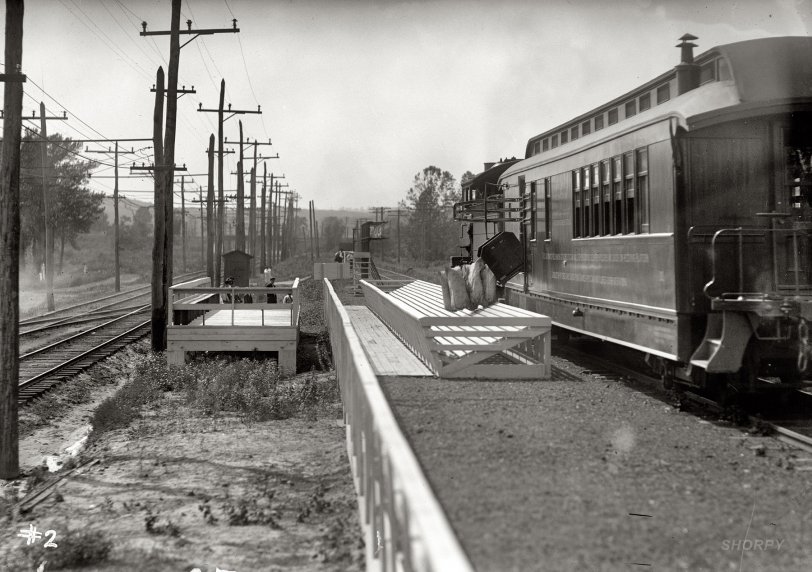


Framed or unframed, desk size to sofa size, printed by us in Arizona and Alabama since 2007. Explore now.
Shorpy is funded by you. Patreon contributors get an ad-free experience.
Learn more.

- What a headache!
- Baldwin 62303
- Baldwin VO-1000
- Cold
- No expense spared
- Tough Guys
- Lost in Toyland
- And without gloves
- If I were a blindfolded time traveler
- Smoke Consumer Also Cooks
- Oh that stove!
- Possibly still there?
- What?!?
- $100 Reward
- Freeze Frame
- Texas Flyer wanted
- Just a Year Too Soon
- WWII -- Replacing men with women at the railroad crossing.
- Yes, Icing
- You kids drive me nuts!
- NOT An Easy Job
- I wonder
- Just add window boxes
- Icing Platform?
- Indiana Harbor Belt abides
- Freezing haze
- Corrections (for those who care)
- C&NW at Nelson
- Fallen Flags
- A dangerous job made worse
Print Emporium
Inbox: 1912

"Post Office Dept. Hupp Auto Railway Service." The download part of the Hupp mail-transfer system. Harris & Ewing Collection glass negative. View full size.
Where?
I wonder where the photo was taken. Note the electric RR on the left, steam RR with the Hupp apparatus on the right.
[Probably Chesapeake Junction. - Dave]
The Hupp System
I assume that the Hupp Automated system wasn't adopted by the Post Office Department. Most photos of RPO Mail Cars as late as the 1940s show the simple hand operated hook system that grabbed the mail sack, while offloading of the mail was done by a postal clerk in the car giving the bag a good solid kick that would send it flying clear of the train's backwash (air currents that would suck the bag into the side of the car or, worse, under the wheels of the train).
The RPO cars were fully functioning postal sorting stations. Many of them even had a slot so that you could drop a letter or a post card in and it would be canceled sorted. It's no wonder that post offices in cities were build next to or across the street from the passenger station.
[The Hupp System ended rather badly, when Albert Hupp was indicted for stock fraud. - Dave]
Zipping Along
Mail traveling on trains meant that to sort mail to its destination, postal clerks needed to know what mail went on what train, not only for towns along its own tracks, but mail that had to be transferred to other train routes. To do that, they had to memorize train schedules. So, what happened when passenger train service dried up? Mail started going on trucks and airlines which could travel every which way, not bound by fixed tracks. In the early 1960s, the POD reorganized into a hub-and-spoke system, with large centralized distribution centers that served scores of surrounding satellite offices. "Early 1960s, hmm?" you say. "That's about when the ZIP Code came in, right?" Yep. That's what it was all about. The first three digits designated the hub, or "sectional center" post office. The ZIP Code was just the visible portion of a fundamental change in the way mail was transported.
By the way, those rail cars didn't just carry sacks of mail; frequently they'd be carrying postal clerks doing enroute distribution - in other words, sorting the mail as they went chugging merrily along.
























On Shorpy:
Today’s Top 5